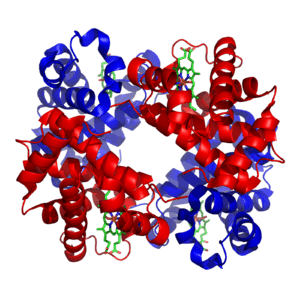Hemoglobin Lepore syndrome facts for kids
Hemoglobin Lepore syndrome (say: HEE-mo-GLOW-bin Leh-POUR SIN-drome), often called Hb Lepore, is a special kind of blood condition. It happens because of a tiny change in a person's genes. It was first discovered in an Italian-American family named Lepore. When a genetic change like this is passed down in families, it's called a trait.
Contents
Where is Hb Lepore Found?
The Hb Lepore trait can be found all over the world. It affects people from many different backgrounds. However, the three main types of Hb Lepore are most often seen in people of Caucasian background from Southern Central and Eastern Europe.
Different Types of Hb Lepore
There are three main types of Hb Lepore. They are named after the places where they were first found. Each type can also have different subtypes.
Hb Lepore Washington
This type is also known as Hb Lepore Boston or Hb Lepore Washington-Boston. It is most common among Italians from Southern Italy.
Hb Lepore Baltimore
This type was first found in a family with African ancestry. It is most common in people from the Balkan countries, including Albanians, Croats, Serbs, Slovenes, and Romanians. It has also been found in Turks, and in parts of Spain and Portugal. A rare case of this type was found in an African American woman in the Bronx, New York. It was called Hb Lepore-Bronx. Another rare type was found in Saskatoon, Saskatchewan, Canada, and named Hb E-Lepore Saskatoon.
Hb Lepore Hollandia
This type was first identified in Papua New Guinea and Bangladesh.


